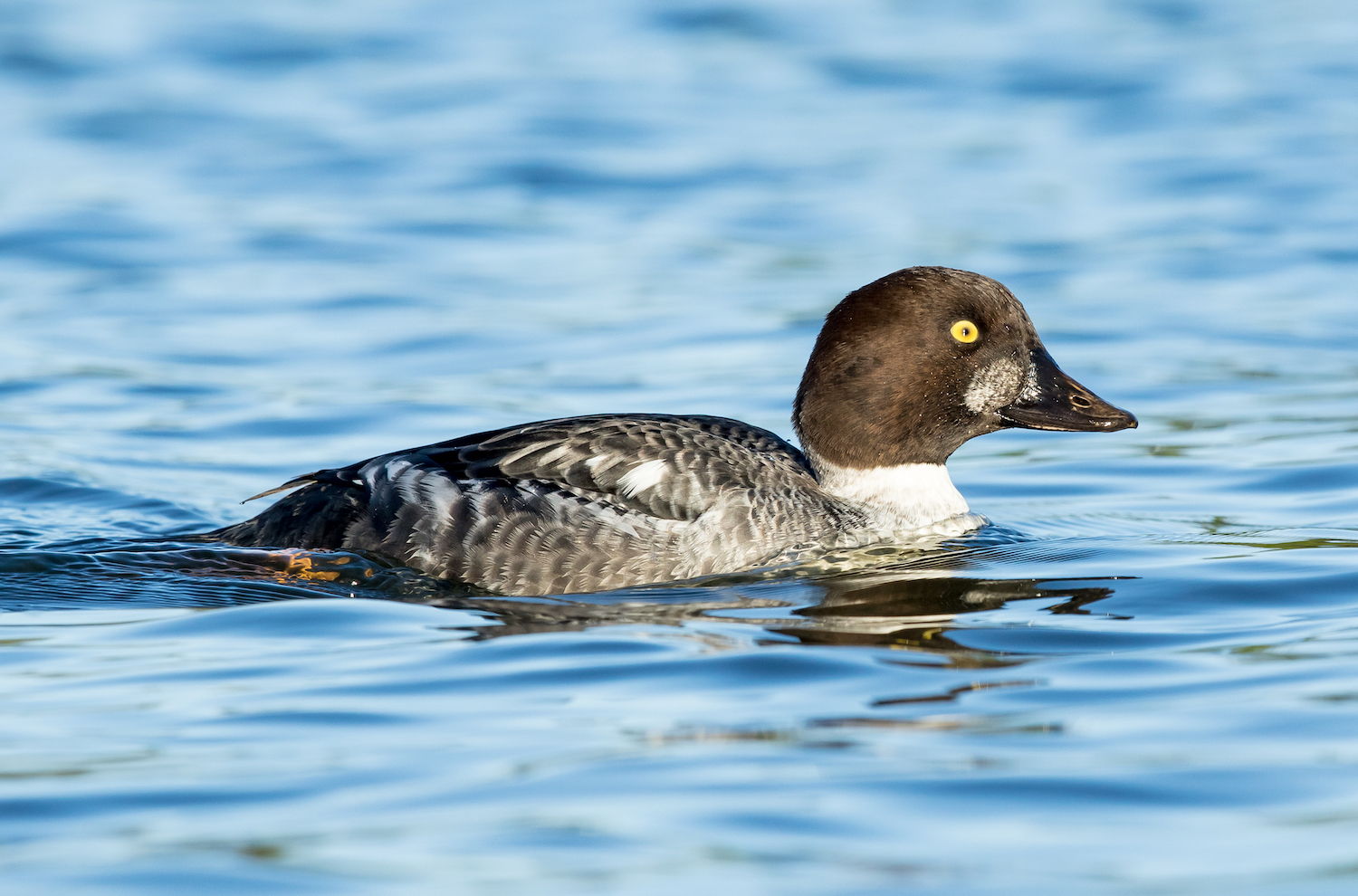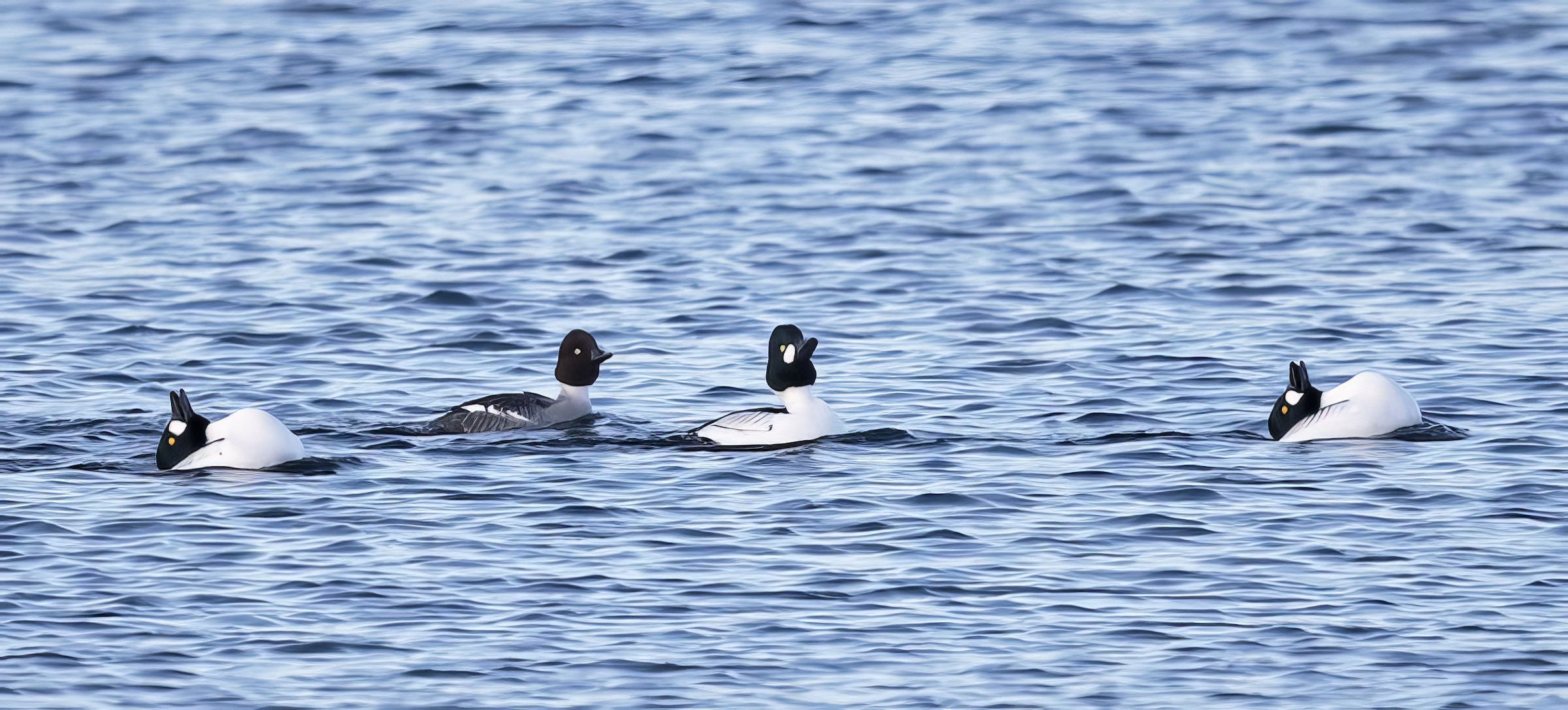Common Goldeneye Bucephala clangula
Fairly common but somewhat localised winter visitor, rare in summer.


Common Goldeneye: left, Cleethorpes December 29th 2015 (Mark Johnson); right, displaying flock Barton Pits January 16th 2016 (Graham Catley).
This handsome duck is declining as a wintering bird in England with WeBS data showing the 25 year trend down 43% to 2017-18. This decline is reflected in Lincolnshire too. The 5-year average of wintering birds shown by WeBS Online to 2013-14 was 812 (split between Humber 490, The Wash 91, and inland 231) while the 5-year average to 2018-19 was 583 (split between Humber 291, The Wash 74, and inland 218). The key area for this species in Lincolnshire is the Humber clay pits. Some of the top counts from there reported in LBR in the last five years have come from the Goxhill area with 666 at Barrow-Goxhill in January 2016 and 340 there in December 2018. One of the most consistently counted sites for Goldeneye in the county has been Covenham Reservoir. Robinson et al in LBR 2014 reported numbers from 1969-70 to 2014-5 showing that after construction numbers stayed reasonably constant from 1983-84 ranging between 60-100 with occasional spikes in cold weather the last being to around 150 in 2012-13. Since then numbers have stayed within the range reported. Birds arrive there from October and numbers peak in February-March; birds remaining after the main departure takes place in April are rare. Coastal passage occurs through autumn and sometime larger movements are noted. An example of this was on November 21st, 2015, when up to 80 birds were seen moving north at locations between Gibraltar Point and Mablethorpe.
(Account as per new Birds of Lincolnshire (2021), included September 2022)
